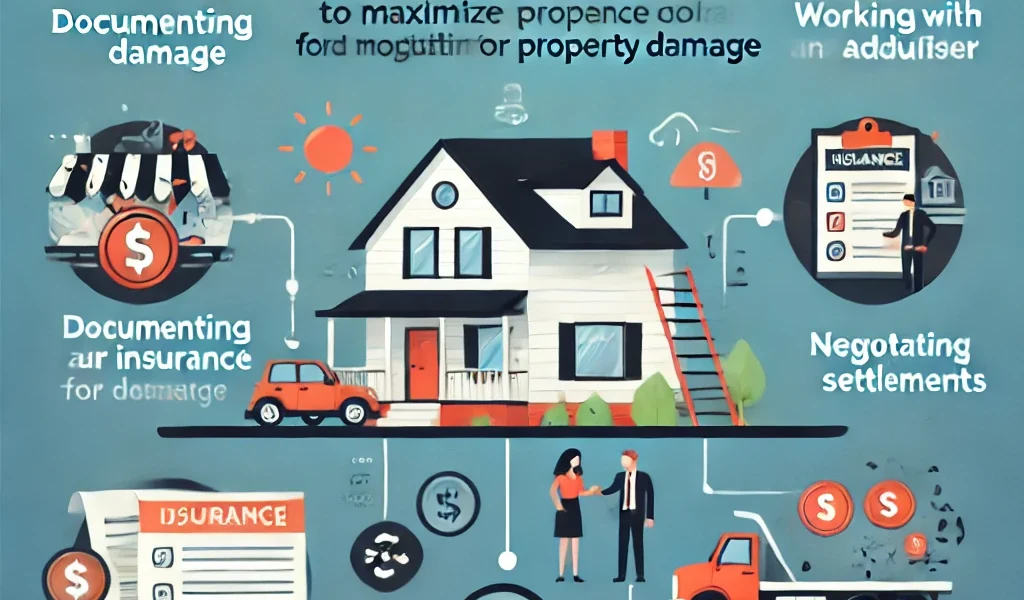Introduction
Filing a home insurance claim after property damage can be overwhelming, especially if you’re unfamiliar with the process. However, knowing how to navigate your claim efficiently can make a significant difference in the payout you receive. Insurers evaluate claims based on policy terms, documentation, and the extent of the damage. This guide will provide step-by-step instructions to help homeowners maximize their payout while ensuring a smooth claims process.
1. Understanding Your Home Insurance Policy
Before filing a claim, it is crucial to understand what your home insurance policy covers. Policies generally include coverage for:
- Dwelling Coverage: Protects the structure of your home from covered perils such as fire, storms, and vandalism.
- Personal Property Coverage: Covers belongings inside the home, including furniture, electronics, and clothing.
- Additional Living Expenses (ALE): Covers temporary housing costs if your home becomes uninhabitable.
- Liability Coverage: Provides protection if someone is injured on your property.
Tips to Maximize Your Claim
- Review your policy to know your coverage limits and exclusions.
- Understand deductibles and how they impact your claim.
- Consider endorsements or riders for high-value items.
2. Immediate Steps to Take After Property Damage
a. Ensure Safety First
- If the damage is severe (e.g., fire, flooding, or structural collapse), evacuate your home and contact emergency services.
- Turn off utilities if necessary to prevent further damage.
b. Document the Damage
- Take clear, high-quality photos and videos of the damaged areas from multiple angles.
- Make an inventory of damaged items, including their estimated value.
- Gather receipts or proof of purchase for expensive belongings.
c. Prevent Further Damage
- Take temporary measures to mitigate additional damage (e.g., covering broken windows, tarping the roof).
- Keep receipts for any temporary repairs as they may be reimbursed by your insurer.
3. Filing Your Insurance Claim
a. Notify Your Insurance Company Promptly
- Contact your insurer as soon as possible to report the damage.
- Provide an initial assessment of the damage and request claim forms.
b. Submit a Detailed Claim Report
- Fill out the claim forms accurately and attach necessary documents.
- Include photographic evidence, inventory lists, and repair estimates.
- Mention any additional costs incurred due to displacement.
c. Cooperate with the Insurance Adjuster
- An insurance adjuster will inspect the damage to determine the payout.
- Be present during the inspection and provide supporting evidence.
- Keep a record of all conversations and emails with the adjuster.
4. Maximizing Your Insurance Payout
a. Get Multiple Repair Estimates
- Obtain at least three quotes from licensed contractors to ensure you get a fair repair estimate.
- Present these estimates to your insurance adjuster for negotiation.
b. Negotiate Your Settlement
- If the initial offer is lower than expected, provide additional proof of damage.
- Consider hiring a public adjuster if your claim is complex or undervalued.
- Be persistent and escalate the issue if necessary.
c. Utilize Additional Coverage
- If you have ALE coverage, claim temporary housing expenses.
- Use any policy endorsements for special damages (e.g., flood, earthquake, or valuable items coverage).
5. Common Mistakes to Avoid
- Delaying the claim: Report the damage immediately to avoid complications.
- Inadequate documentation: Insufficient proof of damage can result in a lower payout.
- Accepting the first offer too quickly: Negotiate for a fair settlement.
- Not reviewing policy details: Knowing your rights and coverage helps prevent disputes.
- Failing to keep records: Always document communications with your insurer.
6. What to Do If Your Claim Is Denied
If your claim is denied, you can:
- Request a written explanation from your insurer.
- Review your policy to check for any discrepancies.
- Gather additional evidence to support your claim.
- File an appeal with your insurer.
- Consult a lawyer or public adjuster if necessary.
7. Conclusion
Maximizing your home insurance claim payout requires preparation, documentation, and negotiation. By understanding your policy, submitting a well-documented claim, and actively engaging in the settlement process, you can ensure a fair payout. Stay informed, act promptly, and protect your financial interests.




